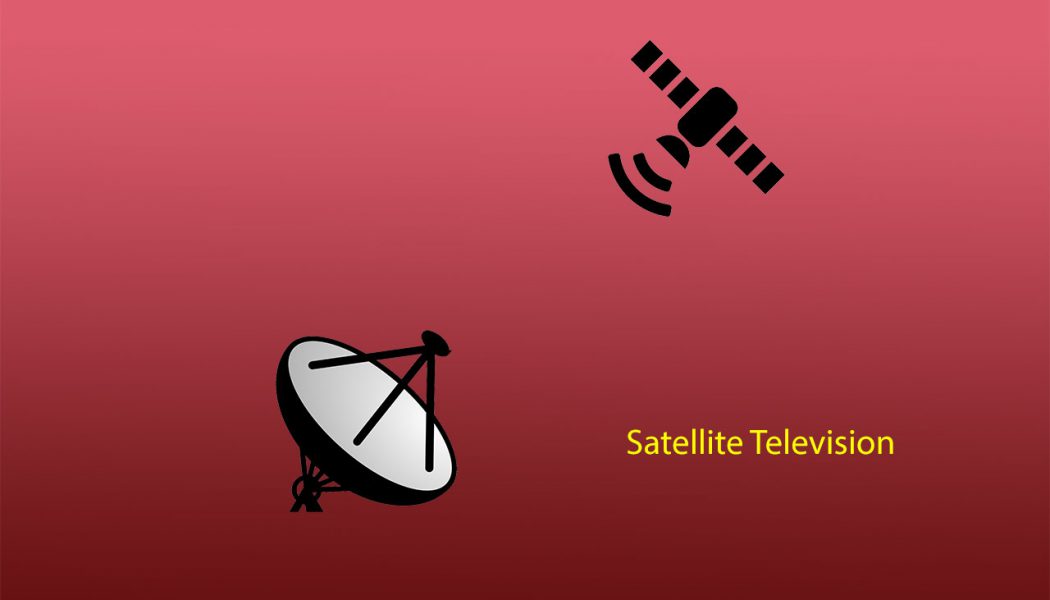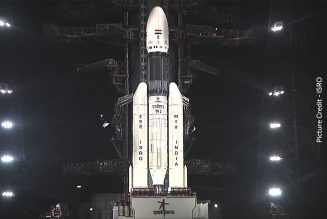Satellite Television is a service which allows Television Broadcast and Reception via Satellites. Direct-To-Home (DTH) is common now. Let us look into some basic aspects of Satellite TV Broadcast and Reception.
Earth and Man-made Satellites
Our Earth revolves around the Sun in an elliptical orbit and at the same time it spins on its virtual axis, which is about 23 degrees inclined. There are many Satellites launched by different countries for different purposes. For Satellite TV broadcast, the Satellite must be stationary with respect to the earth. In other words, the Satellite and the Earth must revolve around the Sun at the same speed.
Like Earth, the Satellites also take 24 hours to complete one rotation. The Satellite should move in a Geo Stationary Orbit (which is about 37000 to 42000 Km from the earth) to achieve this. All Satellites used for TV Broadcasting are placed on this Geo Stationary Orbit.
Gravitational Force
The Gravitational Force of Earth acting on the Satellite varies depending upon the irregularities of the earth’s surface and the Gravitational Force due to Sun and Moon. Hence to keep in pace with Earth, Thrusters on the Satellite are fired as and when required. Thrusters adjust the speed to keep the Satellite in the Geo Stationary Orbit. These Thrusters also keep the orientation of the Satellite correct.
Transponders and Antennae
There are devices called Transponders on the Satellite, which receive signals from the base station. They receive signals in one frequency. It is then amplified and filtered to remove the noise signals. The signals are then converted to another frequency and transmitted back to earth. The frequency of the incoming signal is referred to as Up-Link Frequency. The frequency of the outgoing signal is called Down-Link Frequency. The Up-Link frequency is always higher than the Down-Link Frequency.
The Antennae beam the signals to the Satellite and also similar ones receive signals from the Satellite. These Antennae operate at different frequency bands. For DTH the Frequency Band “Ku Band” is normally used at 12 to 18 GHz. This is a High Frequency and High Energy Band and allows smaller sized receiver Antennae. In the past, big Antennae were used for TV Communication which were operating in the “C Band” at 4 to 8 GHz. This is a Low Frequency and Low Energy Band. Early systems used Analog Signals but the modern ones use Digital Signals providing High-Definition content.
Signals received by the Ku Band Antennae are affected by cloud and rain. This is why the reception gets disrupted when it is heavily cloudy or raining. Though improvements are made on the technology, this still happens occasionally.
Production, Processing and Distribution
The TV Production Unit for every channel produce the content. This is the Program Source. The Programs on these channels are Broadcast by different Satellite TV Broadcasting Networks. They are called Direct Broadcast Satellite (DBS) Providers. The Channel or the Production Unit rents a Transponder from one of the Satellites in the orbit.
The Program Source inserts advertisements along with the content and then beams the signals towards their rented Transponder. Once the Signal from the Program Source is available at one Satellite (a common point for distribution), any DBS Provider can access the signal if they have made an agreement with the Program Source. DBS Providers access signals from many Program Sources (or Channels).
The DBS Providers receive and compile signals from various Program Sources. Signals are Compressed and Formatted to MPEG format. The Bit Rate Standardization and Encryption are also done by the DBS Providers. Like the Program Source, the DBS Providers also rent a Transponder for distribution. The DBS Providers beam the signals to their rented Transponder. The DBS Providers may rent multiple Transponders to transmit huge amount of data. About 300 to 400 channels will be available on a DBS Provider’s Satellite.
Reception
On the End User’s side (Channel Subscribers), the Dish Antenna is oriented towards the desired DBS Provider’s Satellite. Different DBS Providers may use different Satellites and hence the orientation of the Dishes at the end user’s location will be different. These Antennae receives the signals from the Satellite.
Signals will be very weak after travelling great distance. A Low-Noise Block Down-converter (LNB) amplifies the picked up signal and sends to the Set Top Box (STB). The Set Top Box selects, filters and demodulates the channel chosen by the viewer from the available channels. Since the Signals are Encrypted for security and piracy reasons, a dedicated card on the Set Top Box is used to decrypt it back. The decrypted signals are then fed to the Television Unit.
Latency and Buffering
There is a slight delay (Latency) in the Programs that you watch on your TV even though it is a Live Coverage. The signals have to travel a huge distance from Program Source to your Dish and also for the processing by DBS Provider. Usually a delay of about half a second happens between source and destination. Moreover, some providers also do a Content Filtering to remove undesirable content.
You might have wondered why there is no buffering of video when we view the channels via Satellite TV Broadcast, compared to Video streaming on the internet, like YouTube and Facebook. One Broadcaster offers only 300 to 400 channels and the user selects one channel from these to view. There are millions of videos on the internet and the user selects one according to his/her choice. The volume handled by TV Broadcasters is much less compared to the volume handled by Internet. Hence there is no buffering of content when you watch them via Satellite TV Broadcast and there can be buffering while watching over internet.


